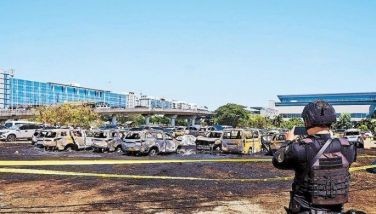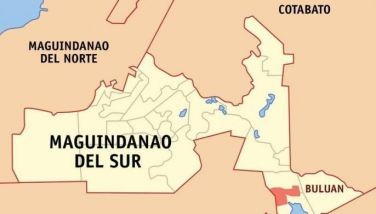Rotating blackouts now 5 hours
MANILA, Philippines - Residents of Metro Manila and neighboring provinces continued to suffer from rotating blackouts yesterday.
The first batch of affected areas included portions of Manila, Quezon City, Bulacan, Cavite, Las Piñas, Batangas and Laguna.
The blackouts lasted from four to five hours as supply and reserves remained insufficient due to the failure of some power plants to go online as scheduled.
The outages might persist today, depending on the ability of power plants to get back online.
On Thursday, the Manila Electric Co. (Meralco) implemented rotating blackouts of up to three hours.
When asked if the situation would continue today or throughout the weekend, Energy Secretary Carlos Jericho Petilla said: “It’s hard to say. It all depends on whether power plants will be able to come in.”
He said Lopez-owned Sta. Rita and San Lorenzo natural gas power plants in Batangas will only be able to generate 250 megawatts out of the expected 1,250 MW by today.
“The rest will come in gradually up to Tuesday at the latest,” he said. “Quezon Power tried coming on this morning but it tripped. It will attempt again at 5 p.m. Calaca (power plant) also tripped on start up but will come in on Sunday. It’s kind of difficult to estimate because it all depends if they come in without any problems.”
Sta. Rita and San Lorenzo Natural Gas Power Plants experienced flooding due to Typhoon Glenda.
Quezon Power’s coal plant is in Quezon province, among the areas hardest hit by Glenda.
Calaca coal-fired plant is in Batangas.
Insufficient supply has caused Meralco to implement manual load dropping (MLD) – a situation where power supply is rationed – starting at 8 a.m. until midnight last night across its entire franchise area.
Meralco said around 75 percent of its customers have had power restored.
It expected to have restored close to 96 percent of affected facilities by 10 p.m. last night.
In an advisory, Meralco said: “There may still be isolated cases, though, where a number of households may still experience power outage.”
As of 12:55 p.m. yesterday, the National Grid Corp. of the Philippines (NGCP) placed the Luzon grid on red alert as reserves were insufficient.
Its actual capacity was at 4,745 MW against a projected demand of 5,813 MW.
Portions of Tuguegarao City and Cagayan province under the service area of the Cagayan Electric Cooperative suffered another four-hour blackout yesterday. The first was on Thursday.
NGCP spokesman Lilibeth Gaydowen said they are closely monitoring the power situation in the Luzon grid.
The affected areas are not among those whose power lines were damaged during the onslaught of Glenda.
As of 11:55 a.m. yesterday, the grid’s available capacity was at 4,745 MW, while demand forecast was at 5,908 MW.
The rotational blackout started from 12:58 a.m. and was expected to last until 4 p.m., Gaydowen said.
Businessmen fear outages
Businessmen fear that the three-hour rotating blackouts could severely affect the operations of many commercial establishments in Metro Manila and other areas in Luzon.
In a statement, the Employers Confederation of the Philippines (ECOP) said many companies, particularly those engaged in export, might not be able to meet their production schedules unless the outages can be immediately resolved.
“Until the power situation returns to normal at the soonest possible time, companies would not be able to meet the deadline for orders,” said the statement.
ECOP called on the government to prioritize power restoration so as not to hamper business operations in Metro Manila, Bicol and other typhoon-hit areas.
The Trade Union Congress of the Philippines (TUCP) has called on the government to implement measures to resolve the prevailing power crisis.
It warned that the power interruptions could drive away foreign investors and lead to massive displacement of workers nationwide.
Labor Secretary Rosalinda Baldoz said she will discuss with the Department of Energy (DOE) the possibility of notifying companies of the schedule of blackouts so they could adopt a flexible work schedule.
“We will ask DOE if companies can be provided with an advance schedule of brownouts or else business operations of many companies may be disrupted,” she said.
Baldoz said the “no work no pay” policy would be observed if commercial establishments decide to temporarily close down and require workers to stop reporting for work due to blackouts.
“Unless there is an agreement between workers and employers, the general principle would be no work-no pay,” she said. – With Raymund Catindig, Mayen Jaymalin
- Latest
- Trending
































